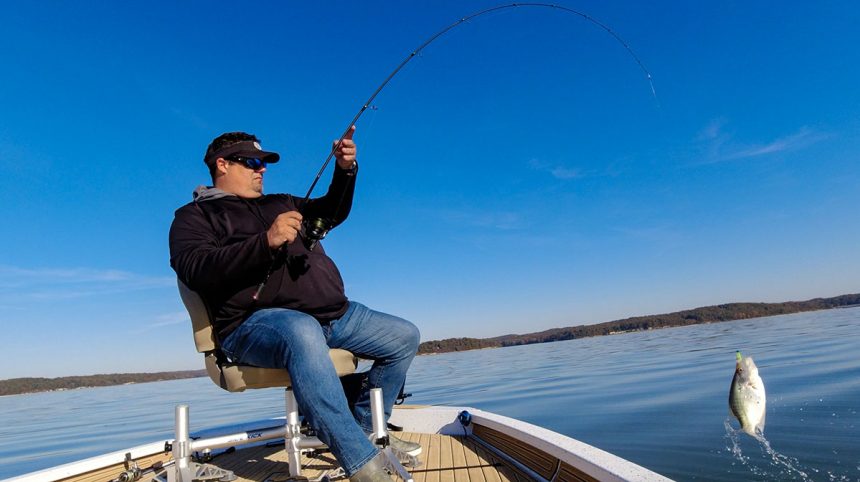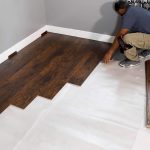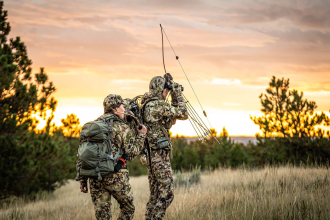Crappie fishing is fun, especially when you’re using the right rod and techniques. It’s great if you can use premium quality rods for catching Crappie, but you need to know how to choose the right rod. One thing that many anglers ask themselves is what kind of action they should be looking for in their rod. Action, for those who are unsure, refers to the rod’s flex under strain, while power refers to its resistance while it’s flexed.
When it comes to fast action and slow action, these two terms refer to how quickly the rod will pull back once you apply force. You can use fast action to catch big, strong fish, so you won’t really need it for Crappie fishing. In fact, fast action can be frustrating in small bodies of water or shallow waters. Slow action is far better for small fish and they’re much more accurate.
For Crappie fishing, medium to medium-fast action is the best way to go. Let’s look at why.
Medium to Medium-Fast is Ideal
As mentioned, the action of a rod determines the specific area where it flexes under pressure, influencing its overall characteristics. When pressure is applied, a faster rod will exhibit higher bending closer to the tip, whereas a slower rod will flex more evenly along the entire length.
In comparison to faster action rods, medium to medium-fast options offer a slightly less efficient transfer of motion from the user to the fish. This allows for a more delicate hookset when targeting Crappie, ensuring a solid connection. Additionally, medium rods provide effective shock absorption during the fight, reducing the likelihood of Crappie escaping by tearing themselves off the hook.
Crappies are also referred to as “paper mouths” due to the membrane constituting the sides of their mouths. Using an inappropriate rod can result in frequent loss of large Crappies during fishing trips. If the hook is not forcefully ripped out of the fish’s mouth during the hookset, most of the larger Crappie will likely free themselves while being reeled in.
The choice ultimately comes down to personal preference. Using a fast or extra-fast action rod for Crappie fishing is still a viable option, and some anglers prefer these rods to a medium or medium-fast model. These rods offer an unparalleled level of sensitivity and feel.
It is worth noting that using a fast rod for Crappie fishing requires a significant amount of finesse and precision to avoid losing fish. Therefore, most anglers opt for a slower rod, sacrificing some sensitivity in exchange for the ability to land more fish.
Power and Action Combination for Crappie Fishing
When selecting a Crappie fishing rod, the action is just one aspect to consider. The rod’s power also plays a significant role in determining its qualities and should not be disregarded. Rod power indicates the amount of force needed to bend the rod based on its action rating. A lighter rod requires less pressure to bend, while a heavier one necessitates more.
In the realm of saltwater angling, heavier rods are commonly favored by anglers who pursue large gamefish. These robust tools are essential for executing a forceful hookset and withstanding aggressive strikes from predatory fish.
Bringing such heavy tackle for Crappie fishing is overkill. If you manage to detect the subtle bite of a Crappie, every hookset would likely result in the hook being forcefully ripped from its mouth.
Crappie fishing necessitates lighter power rods that provide the necessary sensitivity. While lighter rods may not cast as far as heavier rods, most Crappie anglers are willing to accept this compromise.
Lighter rods also open up the possibility of using faster action, which enhances sensitivity for Crappie anglers. Mostly, you’ll find that Crappie anglers choose either an ultralight rod with fast action or a light rod with moderate-fast action.
So, now you’re aware of the best action for Crappie fishing, and there’s nothing stopping you from heading out and catching as many as you can. Good luck!















